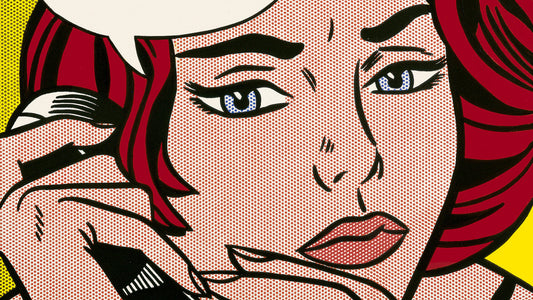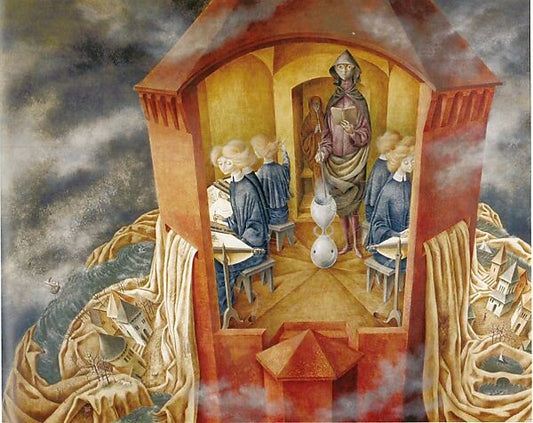We’ve all heard the saying “She’s just ahead of her time” or “He’s an old soul.” These phrases can be used to describe someone who seems like they are living in a different time period based on their style, interests, creations, and sometimes even their mannerisms. Over the years, many of the minds considered “the world's greatest”—such as Albert Einstein, Leonardo Da Vinci, and Frida Kahlo—were considered futuristic thinkers, living way ahead of their respective times. From our modern perspective, it is easy to look back at these historical figures and see how each person really was living “ahead” so to speak, but did they know it? How did these people fit into societies that were perhaps decades too early to comprehend their innovative pursuits?
Well, in short, these brilliant minds didn’t really “fit in” at all. Instead, they found ways to work outside the bounds ofsocietal norms, pushing boundaries and paving the way for new trends and ideas to flourish. And really, many of these “trends” or “ideas” were rejected at first, or impossible by circumstance, only to come to fruition decades or even centuries later like Da Vinci’s 1409 “flight machine” now commonly known as an airplane. These brilliant minds seem to work in mysterious ways, and as the years go on, we can’t seem to get enough of them … But only when the time is right.

So finally, in the 1960s, the time was right for the hidden works of Swedish-born artist Hilma af Klint to make their debut. Af Klint was a future-thinking woman who created over 1,300 abstract artworks in 1906. This was well before “abstract” art was coined by Kandinsky, Mondrian, and Malevich. Af Klint created art that even she considered was made for people of the future. She was so sure of this that she instructed her heir to only show her non-figurative art to the public nearly twenty years after she died in 1944.
According to the New York Times article “In Search of Hilma af Klint, Who Upended Art History, But Left Few Traces,” af Klint was born in Karlberg Palace located in Stockholm, Sweden in 1862. Her family gained a noble title in the early 1800s due to a long standing line of Swedish military service. Despite being born in a palace and having a noble family name, af Klint still led a “starving” artist lifestyle until the end of her career. But before she took on this all-too-familiar artist archetype, af Klint enrolled in the Academy of Fine Arts in 1882, just as the institute first began accepting women due to a large portion of the population being women in Sweden at this time.
When af Klint graduated in 1887 with honors, she had already begun communicating with the spiritual realm. In these spiritual pursuits, af Klint combined aspects of theosophy, a religion founded in science and art often practiced through meditation, study, and experimentation. According to journalist Michael Young, af Klint was once “guided by several spiritual masters all of whom had names and who inspired and communicated with her at weekly séances.” One of these leaders, Amaliel, told her in 1904 that a temple would be built and that it should be filled with paintings representing the spiritual world. Af Klint wrote that,
“This became the great commission, which I carried out in my life.”


And her life work resulted in hundreds of larger-than-life abstract works that seem like they could be paired with one of Pink Floyd’s psychedelic-infused songs. Fascinating to think that this band became world-famous decades after af Klint created these spiritually-guided works with Amaliel.
So, how did this mysterious painter, now having exhibited in museums all over the world like the New York Guggenheim museum and the LACMA, know that her time would come over a century later than the one she lived within? Well, on top of being a woman artist in the late nineteenth century, she also created art no one had seen before. I mean, seriously, women could not even wear pants at this point, do you really think af Klint’s abstract art would have been accepted with open arms?
Af Klint was brave, but experimenting with new art forms and spiritual endeavors would have probably been considered extreme—even today. As the Guggenheim Museum put it in their video about the late artist, af Klint worked to make “the invisible, visible.” Her work went beyond just what could be seen, and as the video wisely puts it, her works are “as confounding as they are revelatory.” As the video goes on, contemporary artist Josiah McElheny responds to af Klints work and states that “She was creating a kind of library of ideas … There’s something so powerful in Hilma’s work. It is really wonderful that she allowed us to save the message until now.”

And it really is wonderful. The Guggenheim video goes on to say that the spiral became a common motif throughout af Klint’s journals, paintings, and sketches and eventually, af Klint sketched a circular building with a spiral staircase to showcase her work. Nearly a century later, her vision came true. In 2018, af Klint’s 6 month show topped The New York Guggenheim’s all time attendance records.
If she were alive today, perhaps af Klint would be decades ahead of where we are in 2023—or maybe she would fit right in. Maybe she would be a quirky contemporary with hexagonal glasses, or perhaps invent time travel. Wherever she may be, I think she would like that I am sitting here, writing a piece wondering the ifs, ands, and buts of her mysterious career—and that’s how it's supposed to be. A mystery.
©ArtRKL™️ LLC 2021-2023. All rights reserved. This material may not be published, broadcast, rewritten or redistributed. ArtRKL™️ and its underscore design indicate trademarks of ArtRKL™️ LLC and its subsidiaries.





